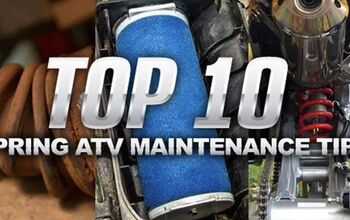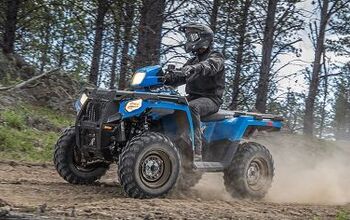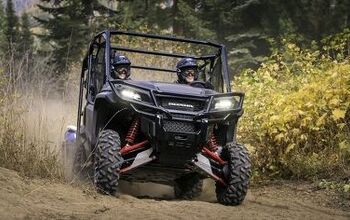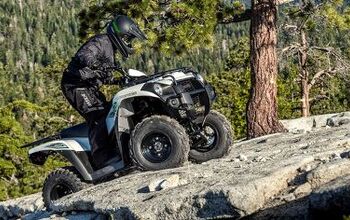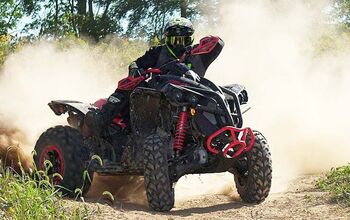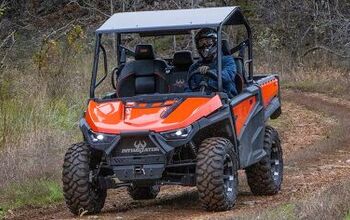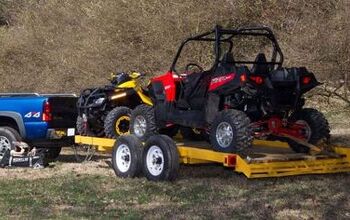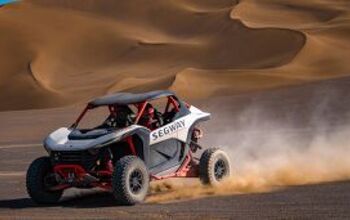What to Look For When Buying a Used ATV or SxS
Let’s face it - buying an ATV or SxS is a big investment. Buying a pre-owned machine can save you some dough, and saving some money is always a good thing…except when it’s not. You have likely heard the expression, “buying someone else’s problem.” That is something none of us ever want to find ourselves doing. When it comes to buying an ATV or SxS, hitting up the pre-owned market requires more vigilance on your part than buying a new unit will. Don’t worry, though. As long as you know what to look for when buying a used ATV or SxS, you’ll likely be just fine.
ATV.com thanks Yamaha for sponsoring this New Rider series.
The Obvious
The first thing you will need to look for is obvious signs of damage. Some dings and scratches are to be expected. After all, these are off-road machines and that often means they are ridden/driven in some harsher terrain types. With an older machine, you can expect that some of these scratches will be a little deeper. Don't immediately dismiss ATVs solely due to cracked plastic bodywork, as occasional wear is not uncommon. Specifically, in the case of Sport ATVs like the Yamaha Raptor 700R, the plastics can be effortlessly replaced with readily available parts. This approach presents a reasonably economical means to secure a better deal. On a SxS, it gets a little trickier to replace bodywork, so see if it is something you can live with.
What is more important to look for are signs of serious damage. Paint can get scuffed on an A-arm, for example. But if the A-arm is bent or misshapen, that can point to a bigger issue. If parts like A-arms, trailing arms, tie rods and more have been replaced, ask why they were replaced and who did the work. If the repair was done by the owner, that doesn’t necessarily rule it out, but a serious inspection is warranted. As long as the work is done right, with quality parts, aftermarket or OEM replacement parts don’t raise too many red flags.
Another obvious one that isn’t always readily taken into account is the condition of the tires. Extremely worn tires, especially on a newer machine, are often a sign of very hard use. Aftermarket tires are very common, as many owners swap out stock tires for something a little more custom, and/or terrain specific. Keep in mind, however, that things like adding big mud tires often require some gearing changes, and if that work hasn’t been done, you can be dealing with a motor and transmission that have been taxed. And mud tires often mean some exposure to mud…
Let’s Talk About Mud
Mud can be a lot of fun to ride in, and there are lots of cool machines that can really handle the sloppy stuff. If you’re looking at a used ATV or SxS that has mud tires on it, chances are good that it has been exposed to some slop at some point. Mud can ruin a machine if it isn’t prepared for it, so checking the used machine out before you buy it is important. For mud damage, there are a couple of things to pay extra attention to. Check the air filter, and take it out for a close inspection both inside and out. If mud got sucked into the air intake, bad things might be happening internally. If you can, also inspect the transmission fluid/oil and if the access is easy enough, pop off the belt cover and inspect that for mud damage, too. This is less of an issue with select machines, especially those with sealed, oiled belt drives. Still, if you suspect mud riding was a big part of the machine’s use, be very vigilant of any mud intake.
Speaking of Fluids
Any inspection of a potential used ATV or SxS must include looking at the fluids. Pull the dipstick for the oil out and wipe some on a clean paper towel. Inspect it for clarity and give it a good sniff, too. If it smells burned, that can mean it was run very hot for an extended period of time. If it is very dark, that often indicates it hasn’t been changed regularly, which means poor maintenance. Run, don’t walk away! On the flip side, super fresh oil means it was just changed prior to you looking at the machine. When that is the case, start up the machine, let it come up to running temperature and then inspect the oil. If they want to sell you the machine, this shouldn’t ever be a problem. Also check the coolant levels, if the machine is liquid cooled, and any and all other fluids in the machine. Letting the machine run a while also helps you determine if there is any water in the fuel.
Test Drive/Ride
Ask for a test ride/drive. If they won’t allow it, that is a hard pass, especially if you have the cash in hand. If it is a SxS, have them hop in, but you need to drive. This is a good time to see if there is an issue that only shows up if the machine is in motion. Worn belts, bad transmissions and other issues will show themselves very quickly. You don’t have to take it on a hard ride, but don’t baby it too much either. Be respectful but protect yourself, too. Trust, but verify, as they say.
Then Talk Price
Know when you can spend before you even look at a used machine, but also know what you should spend after the inspection and test ride. A good deal may not be so good after you drive it, so be ok with walking away. Also know that you may find a thing or two that you will want to talk about in lowering the actual purchase price. Don’t be “that guy” and try to get too good of a deal with a crazy low-ball offer, but also don’t overspend.
Don’t be a desperate buyer. With the market the way it is, there are going to be more used machines out there, so if the seller “knows what he’s got” and refuses to budge; walk away from a deal that isn’t the right price for you.
Check out the New Riders Hub for more articles geared towards new off-road enthusiasts.
Derrek's love for all things ATV started when he was a mere 11 years old, growing up on his family farm. His mom gave him and his sister a choice - get a horse, or a three-wheeler. The sister wanted the horse, and Derrek wanted the ATV. Luckily he won out, and was soon burning up the trails on a Yamaha Tri-Moto 200. By the time he was 14, he had saved enough of his own money by working on the farm and in his folks restaurant to buy a new 4-wheeler. That happened the day he and his mom were driving past the dealership and saw 1987 Banshee. His mom had no idea what he was buying, and he never looked back. He's been riding ever since, and been writing professionally for many years. He has ridden all over North America and been behind the controls of just about every machine out there. And yes, he still has his 1987 Yamaha Banshee.
More by Derrek Sigler



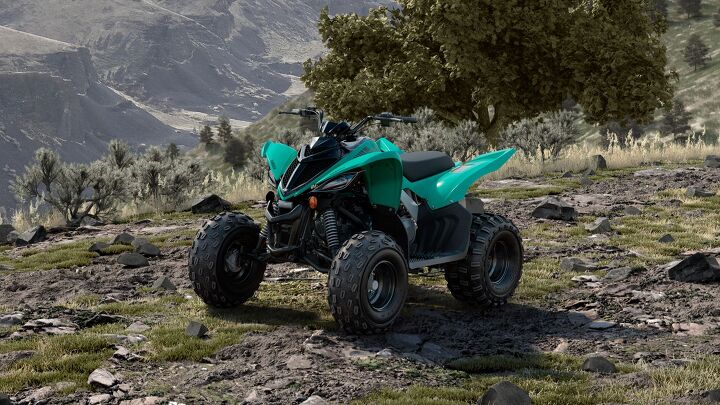








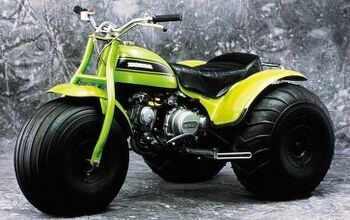

![Derek Guetter Crashes During Backflip [video]](https://cdn-fastly.atv.com/media/2022/10/24/8744073/derek-guetter-crashes-during-backflip-video.jpg?size=350x220)
